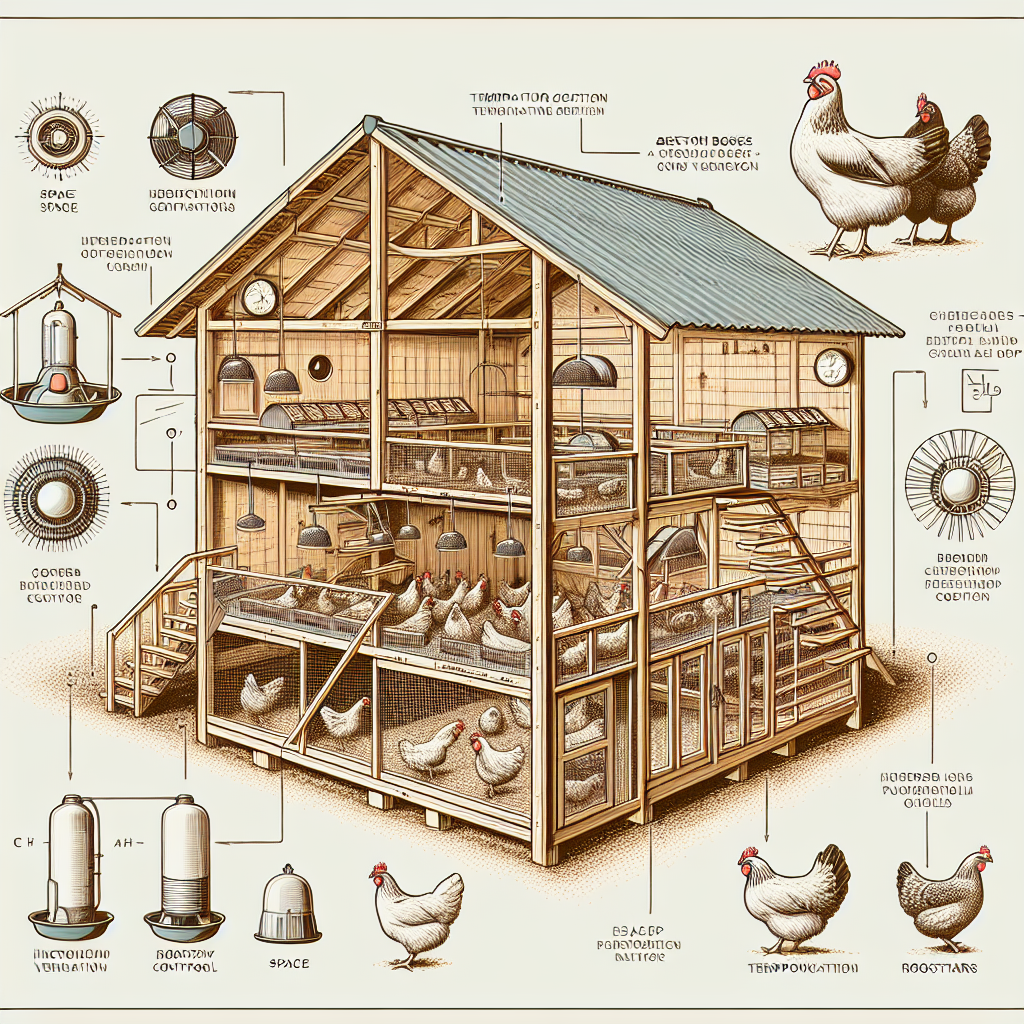If you find yourself with broody hens in your flock, you may be wondering about the specific space requirements for managing these devoted mothers. Broody hens, who are determined to hatch their eggs and raise their chicks, often exhibit unique behaviors and require certain accommodations to ensure their comfort and success. In this article, we will explore the specific space considerations you should keep in mind when managing broody hens, helping you provide the ideal environment for these dedicated feathered friends.
Space Requirements
Size of Coop
When it comes to managing broody hens, providing adequate space is crucial. A spacious coop ensures the comfort and well-being of your broody hens. As a rule of thumb, allow at least 3-4 square feet of coop space per broody hen. This not only gives them enough room to move around but also prevents overcrowding and reduces the risk of aggression among the hens.
Nesting Boxes
Broody hens need a peaceful and private area to lay their eggs and incubate them. It is essential to provide nesting boxes within the coop where broody hens can comfortably fit and feel secure. Aim to have one nesting box for every 4-5 hens. The ideal size for a nesting box is around 12×12 inches, with a depth of at least 8-10 inches. Ensure that the boxes are clean, well-bedded, and easily accessible for your broody hens.
Roosting Space
In addition to nesting boxes, broody hens also require roosting space to perch and rest. Make sure your coop has enough horizontal perches at varying heights, allowing each hen to find their preferred roosting spot. The roosting bars should be around 2 inches wide, providing a comfortable grip for their feet. Providing adequate roosting space not only promotes their natural behavior but also helps maintain a clean and well-organized coop.
Temperature and Ventilation
Maintaining Optimal Temperature
Temperature plays a vital role in managing broody hens, as they require specific conditions for successful incubation. The ideal temperature for brooding is around 99-101 degrees Fahrenheit. To maintain this temperature, consider using heat lamps, heating pads, or other heating sources in the coop during colder months. It’s essential to monitor the temperature regularly and make adjustments if necessary to ensure the well-being of your broody hens.
Importance of Good Ventilation
Proper ventilation is crucial in maintaining a healthy environment for broody hens. Good ventilation helps remove excess moisture, ammonia, and other harmful gases from the coop. This not only prevents respiratory issues but also promotes a more pleasant and comfortable living space for your broody hens. Ensure there are enough windows, vents, or openings in the coop to allow for proper air circulation while still protecting the hens from drafts.
Nesting Materials
Straw or Hay
Providing suitable nesting materials is essential to support the natural instincts of broody hens. Straw or hay are popular choices as they provide a soft and cozy bed for the hens to lay their eggs. These materials also help insulate the eggs and maintain a consistent temperature for incubation. Make sure to replenish the nesting materials regularly to keep them clean and comfortable for the broody hens.
Shredded Paper or Wood Shavings
Alternatively, shredded paper or wood shavings can also be used as nesting materials for broody hens. These options are easy to source and provide good insulation. However, it’s important to avoid using materials that may contain harmful chemicals or toxins. Always opt for non-toxic and safe options to ensure the health and well-being of your broody hens.
Access to Food and Water
Easy Access to Feeders and Waterers
Ensuring easy access to food and water is crucial for the overall health of broody hens. Place feeders and waterers in easily accessible locations within the coop. Consider using elevated platforms or hanging them at an appropriate height to prevent contamination and spillage. Regularly check and clean the feeders and waterers to maintain hygiene and prevent any potential health issues.
Separation and Privacy
Isolating Broody Hens
At times, it may be necessary to isolate broody hens to provide them with peace and privacy. When a hen becomes broody, she may display aggressive behavior towards other hens or even disrupt the nesting area. In such cases, creating a separate enclosure or using a broody hen cage can help maintain a calm and controlled environment. Ensure the isolation area has suitable nesting boxes, food, and water to meet the specific needs of the broody hen.
Perches and Ledges
Providing Elevated Spaces
In addition to nesting boxes, broody hens appreciate having perches or ledges in their coop. Elevating spaces will allow them to observe their surroundings and promote natural behavior. Providing perches or ledges at different heights offers variety and accommodates the preferences of individual broody hens. Ensure the perches are sturdy and large enough to support the hens’ weight, as they will spend a significant amount of time on them.
Predator Protection
Secure Fencing and Locking Mechanisms
Protecting broody hens from predators is of utmost importance. Ensure the coop is adequately fenced to keep out potential threats such as raccoons, foxes, or even stray dogs. The fencing should be buried underground at least 6 inches deep to prevent predators from digging under. Additionally, install a secure locking mechanism on the doors of the coop to keep predators out during the nighttime when the broody hens are most vulnerable.
Dust Bathing Area
Importance of Dust Bathing for Broody Hens
Dust bathing is a vital part of a broody hen’s natural behavior, helping to maintain the health of their feathers and skin. Provide a designated area within the coop where broody hens can indulge in dust bathing. This can be a shallow box filled with sand, dirt, or a mixture of both. Regular dust bathing also helps control pests and parasites, keeping broody hens clean and comfortable.
Natural Light and Sunlight
Exposure to Natural Light
Broody hens benefit greatly from exposure to natural light and sunlight. Ensure the coop has windows or openings that allow natural light to enter during the day. Natural light not only enhances their overall well-being but also plays a role in their circadian rhythm, promoting healthier egg production and overall behavior.
Socialization and Interaction
Allowing Socialization with Other Hens
While broody hens prefer peace and privacy during their incubation period, they still require socialization and interaction with other hens. Ensure that the coop provides enough space for the broody hens to have contact with their flockmates outside of the nesting area. This can be achieved by creating separate roosting or perching areas where hens can gather, interact, and maintain their social hierarchy.
In conclusion, managing broody hens requires careful consideration of various space requirements. Providing a suitable coop size, nesting boxes, roosting space, and easy access to food and water are essential. Temperature and ventilation play a crucial role in maintaining optimal conditions for incubation. Choosing the right nesting materials, ensuring predator protection, and providing opportunities for dust bathing, natural light exposure, and socialization complete a comprehensive approach to managing broody hens. Following these guidelines will help create a comfortable and conducive environment for your broody hens, ensuring their well-being and successful incubation process.




